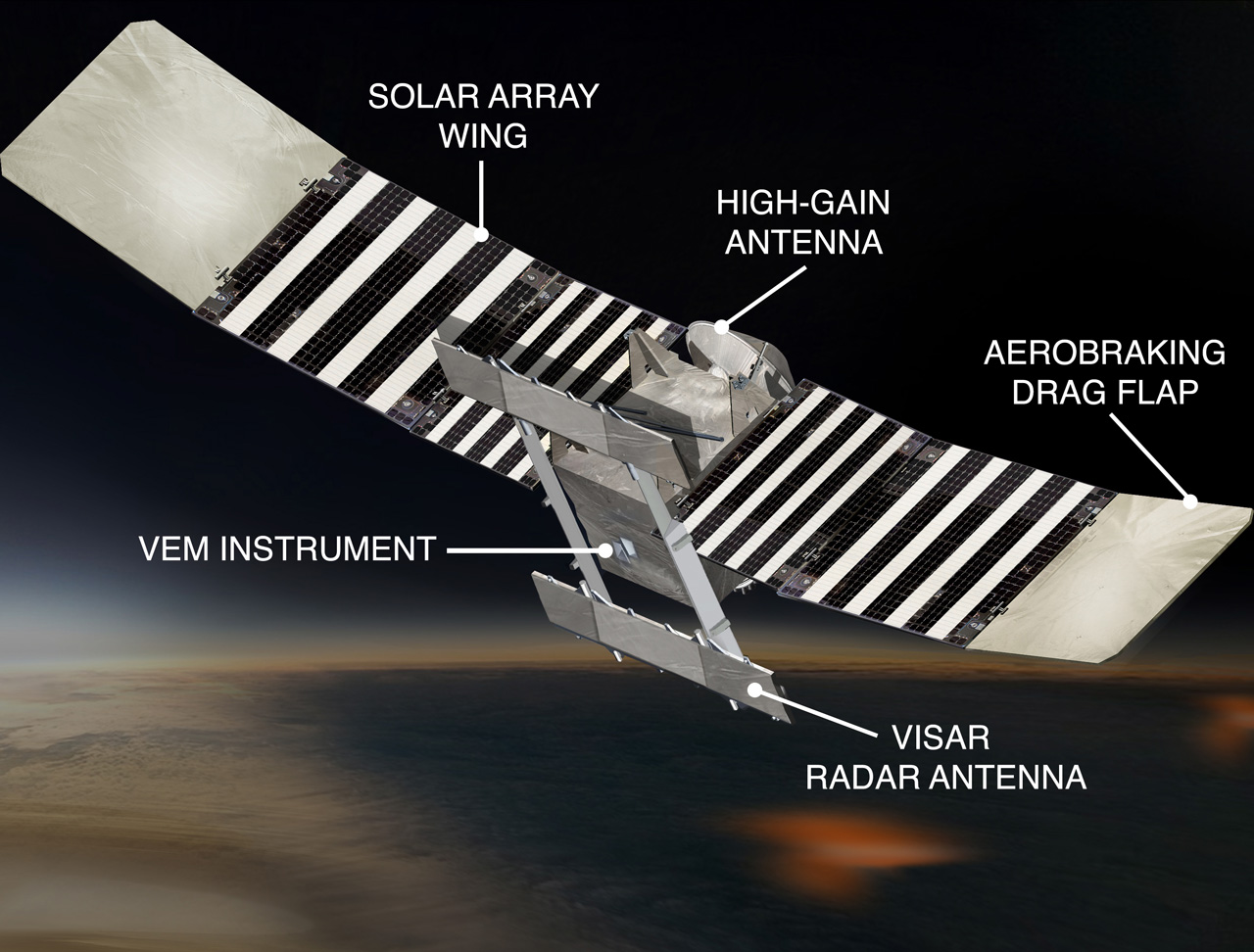VERITAS, together with NASA’s planned Davinci mission, represents the first U.S.-led exploration of Venus since Magellan three decades ago. The mission is designed to bring the VERITAS science investigations into a low, circular orbit around Venus, in order to collect high-resolution, global maps of the hellish surface hidden beneath the clouds.
Spacecraft
The VERITAS spacecraft is a solar-powered Venus orbiter based on the design of the MAVEN spacecraft, which NASA has successfully operated at Mars since 2014. The MAVEN design was adapted to accommodate the VERITAS science instruments, as well as the space environment at Venus, which is much closer to the Sun.

Solar power
VERITAS has two solar array wings with three solar panels on each wing. The arrays deploy shortly after launch and have a total area of just over 300 square feet (28 m2). They produce about 3,400 Watts of power at the distance of Earth's orbit, and about 5,900 Watts at Venus. One side of the outermost solar array panel on each wing is used as a drag flap during aerobraking.
Mission Phases
Launch, Cruise, and Arrival
VERITAS is currently planned to launch in December 2027 on a high-performance vehicle (to be selected later by NASA). The spacecraft arrives at Venus after a six-month cruise, and enters a polar orbit (orbiting over the poles, rather than the equator). VERITAS performs an orbit insertion maneuver using its six main engines.
The spacecraft's initial orbit at Venus, following orbit insertion, will be highly elliptical, lasting 120 hours. A second burn of the engines, called a period reduction maneuver, will shrink the size of the orbit and reduce the period to just 10 hours.
After that, VERITAS begins two phases of aerobraking – dipping repeatedly into the upper atmosphere of Venus and using drag on the solar arrays to reduce the spacecraft's speed and further lower its orbit. Each aerobraking phase lasts about five months. Once aerobraking is completed, VERITAS will be in its final science orbit.
Aerobraking
VERITAS enters its first aerobraking phase about a month after arrival. The two aerobraking phases, together, reduce the spacecraft's orbital altitude at its farthest point from Venus (known as apoapsis) from nearly 20,000 miles to 250 miles (32,000 kilometers to 400 kilometers). Aerobraking reduces the spacecraft's orbit period (the time it takes to orbit Venus) from 10 hours to 1.6 hours.
During a pause in aerobraking lasting about four-and-a-half months, the mission conducts its first science phase, with only the VEM instrument collecting data. After the second aerobraking phase, the second science phase begins, and lasts 2.7 years, or four Venus days. (One day on Venus [a complete rotation] is about 247 Earth days long.)
Science Operations
The VERITAS science mission consists of two phases. Science phase I occurs while aerobraking is paused, about six months after arrival at the planet. Science phase II starts after further aerobraking places VERITAS into a circular, low-altitude orbit over the poles that allows global observations. Nominally, during each day of operations in science phase II, VEM and VISAR will collect data for 16 hours, then the spacecraft will point its high-gain antenna at Earth and lock up with the DSN for an eight-hour session, during which the mission acquires gravity science data.
Over the four Venus days of the nominal science mission, VERITAS is estimated to return about 28 terabits (3.5 terabytes) of science data.





